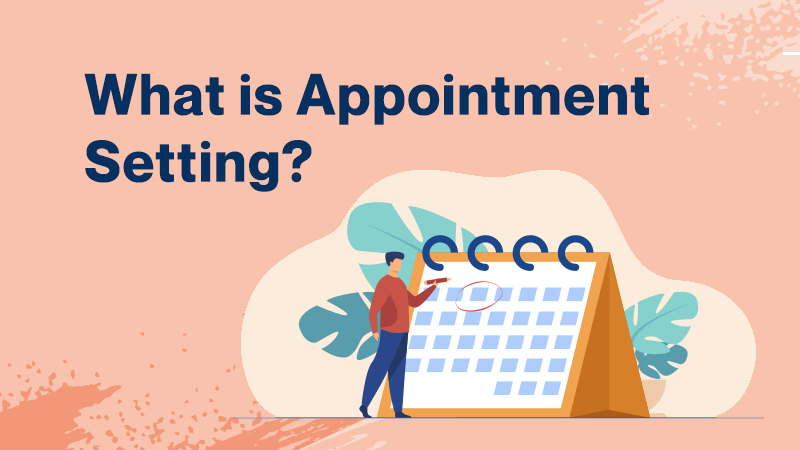Every company wants to grow, and the best way to do that is by securing new clients. New clients mean new revenue streams and an ever-expanding network. The best way to secure new clients is to generate viable leads and convert them, but what does that even look like? Anyone can generate leads, but knowing what to do with those leads is what actually closes deals. Lead management is crucial in this process, and the major turning point in closing a deal rests in the appointment setting.
A Recap on Lead Generation
Lead generation is the process of finding viable prospects and attracting them to your business, with the end goal of converting them into a customer. There are many different methods of generating leads, and here at Callbox, we utilize six lead generation avenues: voice, email, social, chat, website, and webinars. However, these tools can be used for more than just lead generation, they can be used in lead management and appointment setting.
After generating a list of leads, researching the leads for fit, and nurturing those leads into interested potential buyers, it is important to consider how these leads will be managed and ultimately, converted into customers. Thus, it is time to take the next step in the sales process: appointment setting.
What is Appointment Setting?

As the name suggests, appointment setting is the process of scheduling appointments or meetings with potential clients to get the ball rolling. Up until this point, the potential client may not have even heard of your company. In other cases, they are familiar with but have not made first contact yet, instead of relying on maintaining interest through more passive means, whether it be emails or website visits. Appointment setting is the first step in actually speaking to a prospect, usually over the phone or a video call.
The process of appointment setting is fairly simple, you need only go through the list that your lead generation team has provided and schedule meetings with as many viable prospects as you can. From there, the salesperson takes over and will eventually have a chance to talk with the prospect.
Despite the actual process of appointment setting being fairly simple, actually scheduling an appointment can sometimes be one of the most difficult parts of business development, especially for smaller start-ups that do not have the resources to dedicate to many prospects. After all, for an appointment to be set, the prospect must have a genuine interest. A good lead management system and lead nurturing process are helpful in determining which leads are ready for appointments. For smaller companies with fewer resources, this process can be assisted by companies that offer appointment setting services, such as Callbox.Boost your sales meetings with potential customers with the help of our proven appointment setting approach.
The Importance of Appointment Setting
An appointment setting is crucial in converting leads into customers. Just like many other aspects of the lead management process, appointment setting keeps your company at the forefront of the prospect’s mind. Unlike other forms of lead management, appointments give you the chance to speak with a prospect one-on-one, giving your company a name, a face, and a voice. No matter how many emails your prospect opens, or how many times they click through your website, a sale is not possible without speaking to them first. Therefore, appointment setting is an integral part of the sales process and serves twofold purpose: sales potential and activity generation.
Related: The 4 Main Lead Generation Goals: What Has Changed & How to Reach Them
As mentioned before, it is impossible to sell if you do not actually speak with your prospect, but it is also impossible to sell to a prospect that is not actually viable. By scheduling an appointment, you can learn far more about a lead than their website or click-through history may tell you. When you go into an appointment, you often already have information about a prospect’s fit and intent, but your conversation with a potential client can tell you a lot about how interested they actually are in buying.
If it turns out that they are not interested in buying, then the appointment still helped gather information about the prospect. At this point, perhaps your team decides that they are not a viable lead, and you can dedicate your time and resources elsewhere. On the other hand, perhaps the appointment goes well, and you are able to determine that the prospect is receptive to a potential. With this information, you can cater future material to the prospect’s interests and increase activity, or even close a deal right then and there.
Either way, the appointment setting process is able to weed out dead leads and push forward viable prospects.
How to Set Appointments
To set an appointment, you want to start by identifying a viable prospect that fits your ideal customer profile. Your ideal customer profile is a set of criteria that you can apply to potential clients to see if they require the services you offer. You can reference your existing customers to determine what your ICP is. By doing this, you target companies that have a better chance of becoming customers. This makes the appointments you set more valuable.

From there, you need to engage with your key prospects across multiple channels, tailoring your outreach based on their activities. You have options across multiple channels to engage clients, such as email, phone, social media, or web services, which can all be used to deliver appointment-setting touchpoints based on their interests.
You can use email to warm up your prospects and familiarize them with you and your services. Usually, multiple emails are sent throughout the campaign, and as a prospect engages more and more, you can suggest meeting to discuss in person or over the phone.
Phone
Calling prospects is a great way to secure an appointment. Calling can be more personal and flexible since a conversation can happen one on one and in real-time. You can ask the prospect questions about their needs and in turn, they can ask you questions about your services. Ultimately, the call provides a perfect opportunity to lead into a follow-up conversation with the prospect.
Social
Social media runs the world, and by having a social media presence you enhance your campaign's online visibility.
Related: Top Lead Generation Strategies for LinkedIn, Facebook and Twitter in 2023
Web
Your prospects need somewhere to go to learn more about your campaign, and by having a landing page on your website, you can offer downloadable resources and more information that encourages a potential client to schedule an appointment.
Regardless of the method you use to contact a prospect, you need to give the prospect information about your campaign and identify the pain points, or issues in their business that cause them problems. You need to be familiar with their needs, interests, and challenges so that you can cater your message to suit their needs. From there, you can posit solutions that your company could provide. In a phone call, this conversation can happen much more organically, since you can ask questions and get the prospect to talk about how they wish to improve their company. Develop a clear and strong case for your position. It sends a message that you know what you’re talking about and eventually, the solution to their pain points.
Things to Remember
Do your research.
When reaching out to a prospect to secure an appointment, it is important to research the target company to make sure they fit your criteria. Identifying pain points will help you know how to turn the exploratory call or email into an actual appointment. After that, it is important to research the professionals and decision-makers at your target company. This can be done by researching titles on their website. The Chief Financial Officer (CFO) is often a safe bet, as they will be a part of the buying process. Once you have identified what to discuss and who to discuss it with, you can engage with the target and lead them into scheduling an appointment.
Have a script, but do not be afraid to mix things up.
Scripts allow you to be consistent in your messaging, whether it be over the phone or email. A call script will help you stay on topic during discovery calls and lead the conversation toward securing a meeting. That being said, you do not have to follow the script verbatim. Sometimes, when doing dozens of discovery calls, following a script will result in you sounding robotic and can scare off potential customers, who want familiarity. By mixing up your script, you can keep the conversation engaging and exciting, addressing a target’s specific needs instead of taking a more general approach.
How cold calling scripts should be? A calling script must contain keywords and substantial ideas that would stir up the prospect’s interest.
The 3 P’s: Personal, Positive, and Persistent.
When trying to set an appointment, stay personal and positive to increase your chances of securing a follow-up call. Prospects can tell when a caller is actually excited about the service they are offering, and if you approach a call amicably, it will show. You also want to make sure that you are not coming across as just another seller, so build your reputation up as someone whose first priority is to help solve problems, not just sell solutions.
Additionally, do not take rejections personally. Many emails and phone calls are met with no response or a “no,” since prospects are bombarded with dozens of sales pitches every week. For this reason, you must remain persistent. Keep prospects on a long-term list and make sure to touch base every couple of months to see where they stand in the buying process.
Be accessible.
By providing a call to action (CTA) in emails, phone calls, and across your website, you provide a way for interested prospects to do their own research and can even get prospects to schedule their own appointments.
Utilize Social Media

You can use social media to build your reputation and relationships online. In today’s day and age, virtually everyone uses social media in their personal lives as well as in business. By developing a social media persona and staying active on that account, you can build trust with prospects in your field and encourage them to engage with your business. This is also known as a social media funnel because it funnels traffic to your website.
Check out the full article at Callbox - The Savvy Marketer



